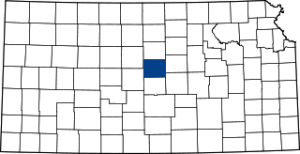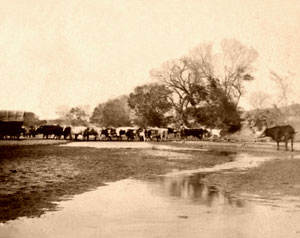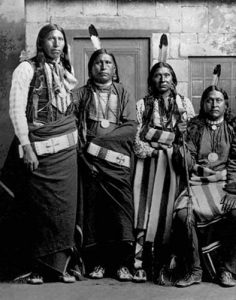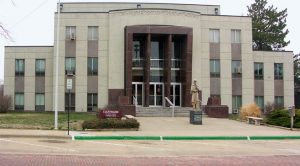Towns & Places
Carneiro (unincorporated – ghost town)
Ellsworth (county seat)
Holyrood
Kanopolis
Langley (unincorporated – ghost town)
Lorraine
Wilson
Black Wolf
Terra Cotta
Venango
More Extinct Towns
One-Room, Country, & Historic Schools of Ellsworth County
Fort Harker – Kanopolis, Kansas
Kanopolis Lake
Kanopolis Lake Legacy Trail
Mushroom Rock State Park
Post-Rock Scenic Byway
Smoky Hill River
Smoky Hill Trail
Smoky Hills of Kansas
Ellsworth County, Kansas, located in the state’s center, was created out of unorganized territory in August 1867. It was named in honor of Lieutenant Allen Ellsworth, who built Fort Ellsworth on the Smoky Hill River in 1864. This military post, later renamed Fort Harker, protected the early settlements and served as a shipping point for the Santa Fe Trail.
The country is diversified with rich valleys, rolling prairies, and bluffs along rivers and creeks. The principal watercourse is the Smoky Hill River, which enters the county about six miles south of the northwest corner and flows in the southeasterly direction before leaving the county about five miles north of the southeast corner.
The Plains Indians made this and other areas of western Kansas their hunting and camping grounds until the late 19th century, before settlers and the construction of transcontinental railroads displaced them.
One of the earliest settlements in the county was made late in the 1850s by P.M. Thompson. Others who came about this time were Adam Weadle, D.H. Page, D. Cushman, and Joseph Lehman. They all settled in the same locality. In 1860, a settlement was made on Clear Creek north of the Smoky Hill River by S.D. Walker, C.L., J.J. Prater, Henry, and Irwin Farris. Late in the same year, H. Wait and H.P. Spurgeon came to Ellsworth, the former settling on Thompson’s Creek and the latter with the Walker party on Clear Creek. All of these men were unmarried or without their wives. T.D. Bennett moved to the county in August 1861, and his wife was the first white woman in the settlements.
In the summer, Indian troubles began when a man on Cow Creek and S.D. Walker of the Clear Creek settlement was killed. Fearing another attack, other county pioneers took refuge at the stage station on the Smoky Hill River. However, when they learned that Indians were coming in great numbers, they left for the east.
In June 1864, Lieutenant Allen Ellsworth and 40 men were stationed at Page’s old ranch on the Fort Riley-Fort Larned Road crossing of the Smoky Hill River. They built a blockhouse there, and in July, General Curtis named it Fort Ellsworth. In 1866, the fort was renamed Fort Harker in honor of General Charles Garrison Harker, who died in combat during the Civil War. In the following years, many famous generals and individuals were often located at Fort Harker, including General George Armstrong Custer, General Nelson Miles, General Winfield Scott Hancock, General Philip Sheridan, William F. Cody, and James B. Hickok were also stationed at the fort either as scouts or briefly living there.

Fort Harker, Kansas by Alexander Gardner, 1867.
When the county was organized in 1867, the governor appointed temporary officers and commissioners. A general election was held on August 10, 1867, for permanent officers and commissioners, and Ellsworth was made the county seat.
The first school was established in 1867 in a dugout along Thompson Creek, but it was unable to complete the first term due to an Indian scare. The first railroad in the county was the Kansas Pacific, built in 1868, which followed the general course of the Smoky Hill River.
On March 22, 1869, 14 Pawnee Indians, including scouts honorably discharged after working for the army, were traveling through Ellsworth County when they ran into U.S. cavalry troops. Though the Pawnee had discharge papers from the army, a fight ensued. The Indians retreated to a sandstone cave known today as Palmer’s Cave. Their attackers set fire to the grass at the cave’s entrance, and six to nine Pawnee men were killed as they ran out. The others died from exposure without their possessions.
The first church was the Holy Apostles Episcopal Church, founded in 1870 in Ellsworth.
In the 1870s, cattle drives and the establishment of the Butterfield Overland Despatch contributed significantly to the settlement and economy of the area. Ellsworth quickly developed into a thriving cattle market, dominating other Kansas cowtowns from 1871 to 1875. The flood of cowboys also came with gamblers, outlaws, and the inevitable “unruly” women.
Ellsworth businessmen, anticipating the shift in the cattle trade from Abilene, moved the Drovers Cottage, once owned by Joseph McCoy, to Ellsworth in 1872. It could accommodate 175 guests and stable 50 carriages and 100 horses. Numerous other businesses also sprang up, profiting immensely from the cowboys.
In 1872, $12,000 of bonds were issued to construct a two-story brick county courthouse and a stone jail.
Like other Kansas cowtowns, Ellsworth quickly gained a reputation as a wild and woolly place, becoming the scene of numerous killings following shootouts between drunken cowboys. In its early days, the area was besieged by a gang led by two men named Craig and Johnson. Making frequent robberies and bullying the townspeople, the citizens finally organized a vigilance committee and hanged the two near the Smoky Hill River.
For some years, immigration was slow, but that changed in 1873 as several immigrants began to settle in the county. Swedes were located in the southeastern part of the county, some Bohemians in the west, and Germans were scattered but were especially numerous in the south. A large colony arrived from Pennsylvania in the spring of 1878 and settled near present-day Wilson. In the early 1880s, large tracts were bought up for ranches, some containing as many as 18,000 acres, which tended to keep the population down. In time, as the land increased in value, these large ranches were broken up and sold as farms so that the county became a farming area.
The Ellsworth County Agricultural and Mechanical Fair Association was organized in 1877 and became one of the well-known institutions in the county. The first newspaper in the county was the Ellsworth Reporter.
In 1910, the county’s population peaked at 10,444. Several important crops were raised then, including corn, winter wheat, oats, and prairie hay. The county also had over 50,000 bearing fruit trees, and livestock raising was important to the economy. At that time, five railroad lines provided excellent transportation and shipping facilities.
Magnesium limestone was abundant in the northeastern portion, and red sandstone was in the central and southwestern parts. Mineral paint of good quality and excellent potter’s clay were also found in many localities. Large quantities of gypsum existed in the highlands, and in the central part were vast rock salt beds, which were extensively mined at Ellsworth and Kanopolis. Coal was the chief mineral product from three mines opened in the early 1980s near Wilson, south of the Smoky Hill River.
In the following decades, Ellsworth County’s population dropped almost every decade. Today, it remains primarily a farming and ranching county. The county seat and most populous city is Ellsworth. As of the 2020 census, the county population was 6,376.
©Kathy Alexander/Legends of Kansas, updated July2025.
Also See:
Sources:
Blackmar, Frank W.; Kansas: A Cyclopedia of State History, Vol I; Standard Publishing Company, Chicago, IL 1912.
Kansapedia
Wikipedia







